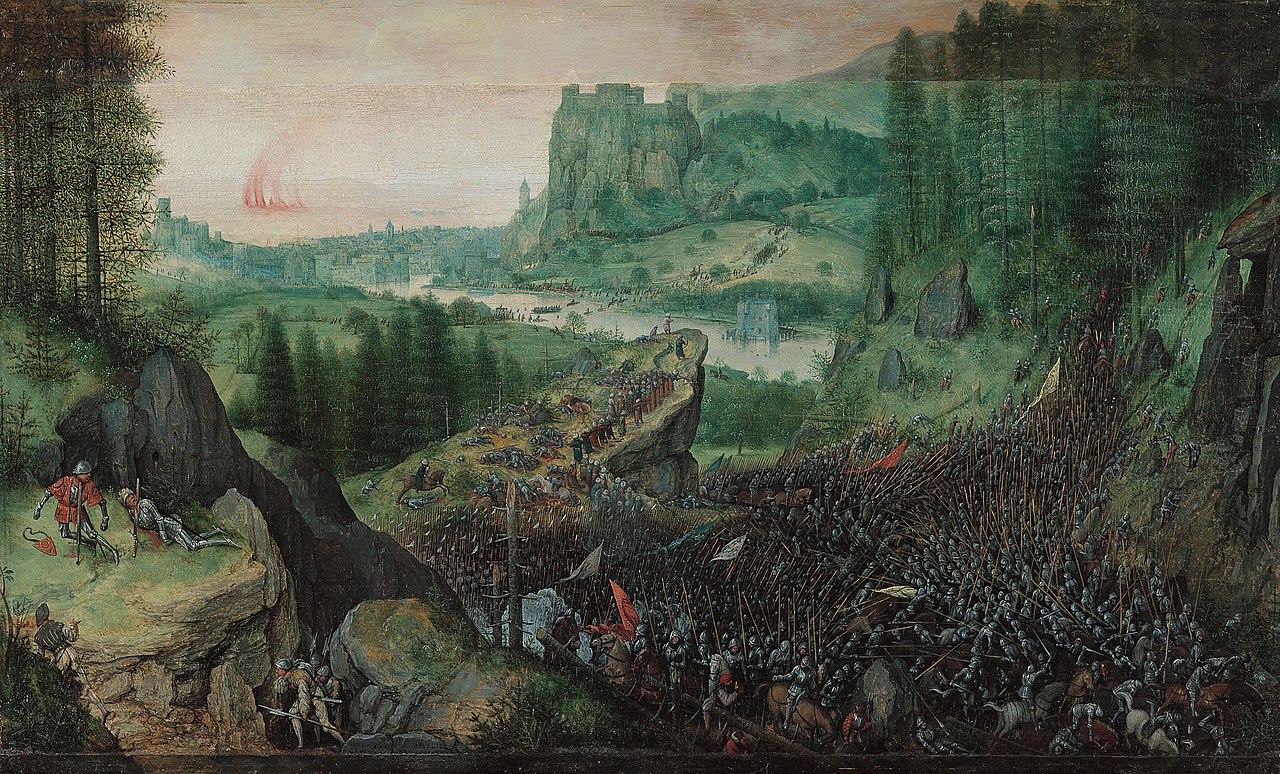The Suicide of Saul by Pieter Bruegel, 1 Samuel 31:1-6, Bible.Gallery

The Suicide of Saul created 1562 nad was completed in 1562 Its dimension is 55cm wide and 33.5cm high and it was drawn with oil on panel style.
Artwork Description
The artwork "The Suicide of Saul" is an oil-on-panel painting created by the Netherlandish Renaissance artist Pieter Bruegel the Elder in 1562. It is currently housed in the Kunsthistorisches Museum in Vienna.
The painting depicts the seldom-illustrated scene of the suicide of King Saul following his defeat by the Philistines. This event is narrated in 1 Samuel 31:1-5 from the New King James Version of the Bible:
"When the Philistines fought against Israel, and the men of Israel fled from before the Philistines, and fell slain on Mount Gilboa. Then the Philistines followed hard after Saul and his sons. And the Philistines killed Jonathan, Abinadab, and Malchishua, Saul's sons. The battle became fierce against Saul. The archers hit him, and he was severely wounded by the archers. Then Saul said to his armorbearer, 'Draw your sword, and thrust me through with it, lest these uncircumcised men come and thrust me through and abuse me.' But his armorbearer would not, for he was greatly afraid. Therefore Saul took a sword and fell on it. And when his armorbearer saw that Saul was dead, he also fell on his sword, and died with him."
Bruegel has chosen to portray the intensely dramatic moment of the armorbearer's death just as the Philistines are closing in (see the first detail). Saul's demise was often interpreted as a consequence of his pride, and it was among the proud that Dante encountered Saul in the "Purgatorio." This may explain Bruegel's selection of such an unusual subject.
Similar to most of Bruegel's biblical depictions, he portrays Saul's suicide as a contemporary event, with the soldiers wearing 16th-century armor. This approach aligns with Albrecht Altdorfer's portrayal of Alexander the Great's battle with Darius in the Battle of the Issus in 1529. Bruegel borrowed several elements from Altdorfer, especially in the representation of the densely packed soldier figures and their numerous lances. Additionally, Bruegel might have drawn inspiration from the battle scenes of another German painter, Jörg Breu the Younger, and a now-lost battle scene by Antwerp landscape painter Joachim Patinir mentioned by biographer Karel van Mander.
"The Suicide of Saul" represents one of Bruegel's early attempts to reconcile landscape and figure painting. When compared to one of his later works, "The Magpie on the Gallows" from 1568, the painting reveals certain weaknesses, such as the lack of harmony between the foreground and background. Notably, the central outcrop of rock in the second detail is a mannerist device that reappears in "The Procession to Calvary." However, the distant landscape is viewed through a shimmering haze, which appears to accentuate the foreground detail, marking a new phase in Bruegel's development of naturalistic landscape representation.